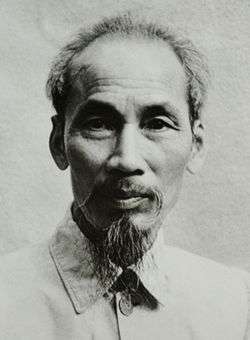Hoàng Kế Viêm
| Hoàng Kế Viêm | |
|---|---|
 Hoàng Kế Viêm Tomb in Trường Sơn Commune, Lệ Thủy District, Quảng Bình Province | |
| Native name | 黃繼炎 |
| Born | Quảng Ninh District, Quảng Bình Province |
Hoàng Kế Viêm (1820–1909) was a general of the Nguyễn Dynasty.[1] His real name was Hoàng Tá Viêm. Born in Quảng Ninh District, he passed the royal exam with the grade of cu nhan ("recommended") in 1843. His wife was princess Huong La, the daughter of King Minh Mạng.
Military career
Hoàng Kế Viêm played a leading role in the Nguyễn Dynasty's wars against the French in the second half of the nineteenth century, but with little success. In March 1883 he attempted to overwhelm the weak French garrison of Hanoi but was defeated in the Battle of Gia Cuc. In June 1883, in the wake of Liu Yongfu's victory at the Battle of Cầu Giấy (Paper Bridge), he besieged the small French garrison of Nam Định, but his army was defeated on 27 July when the French commandant supérieur Pierre de Badens made a simultaneous frontal and flanking attack on his entrenchments, capturing his entire siege train and forcing the Vietnamese to raise the siege.[2]
In December 1883 he took part in the Sơn Tây Campaign, where his forces shared in Liu Yongfu's defeat. In April 1884 he was driven from Hưng Hóa and Đồng Văn by the French and forced to retreat to Phú Ngô not far from the southern Tonkinese town of Ninh Bình. Trapped and besieged by General Louis Briere de l'Isle in Phú Ngô in April 1884, he was released in consequence of the conclusion of the Tientsin Accord between France and China on 11 May 1884 and the Treaty of Huế between France and Vietnam on 6 June 1884.[3]
During the Sino-French War (August 1884 to April 1885) his forces operated in concert with the Chinese Yunnan Army around Hưng Hóa, but to little effect.
Attitude to can vuong
Despite his anti-French credentials, Hoàng Kế Viêm did not support the Cần Vương insurgency against the French in the summer of 1885. Instead of supporting the Hàm Nghi as legitimate king, he gave his allegiance to Đồng Khánh, enthroned by the French in September 1885 and considered by many Vietnamese as a puppet king.
References
- ↑ Hy V. Luong Tradition, Revolution, and Market Economy in a North Vietnamese Village, 1925– 2006 2010 Page 296 "Hoàng-Kế-Viêm, the former governor general of Hưng-Hoá, Sơn-Tây, and Tuyên-Quang, was appointed troop commander (Kiều-Hữu-Hỷ et al. 1961:10). However, he played little role in the anticolonial movement from this point onward."
- ↑ Huard, pp. 91–92
- ↑ Huard, pp. 286–90
Sources
- Huard, L., La guerre du Tonkin (Paris, 1887)
- Thomazi, Auguste, La conquête de l'Indochine (Paris, 1934)
External links
- Hoàng Kế Viêm, Vietnam Library of Science.

